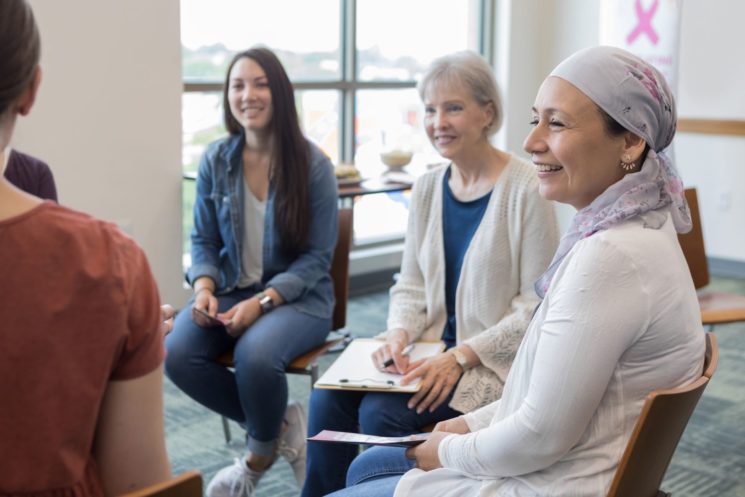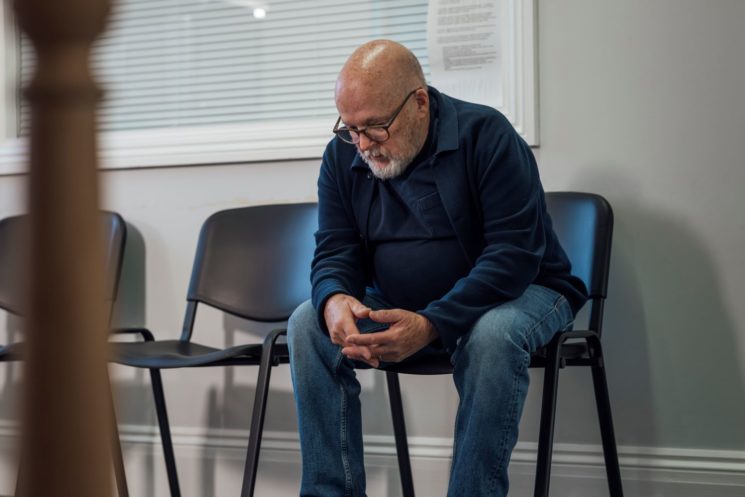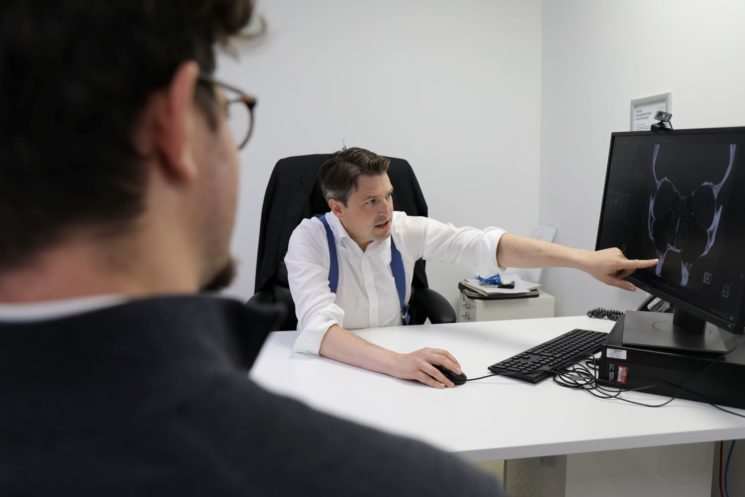
Secondary breast cancer is a lesser-known form of breast cancer that affects 61,000 people in the UK annually. We spoke to Ms Jennifer Hu, Consultant Oncoplastic and Reconstructive Breast Surgeon, to find out more about this type of cancer.
What is secondary breast cancer?
Secondary breast cancer is known by other terms, including metastatic, advanced, or stage 4 breast cancer. If you have not previously been treated for primary breast cancer and it is found that you have secondary breast cancer, your doctor may refer to it as ‘de novo’ secondary breast cancer – which means ‘new’.
Secondary breast cancer should not be confused with locally advanced breast cancer, which is when breast cancer has spread to nearby areas like the lymph nodes, chest muscle, or the overlying breast skin and nipple. Secondary breast cancer spreads to distant regions of the body – most commonly the bones, but it can also metastasise to the lungs, liver, and brain.
Secondary breast cancer spreads when cancerous cells break away from the primary tumour in the breast and travel through the lymphatic system or bloodstream to distant parts of the body. The cells then settle and develop into new tumours.
Receptors in secondary breast cancer
Most breast cancer cells have receptors (proteins), which hormones – or a protein known as HER2 – can attach to and encourage the cancer cells to grow. A pathologist will test to see if your cells have receptors, and if so, what type they are – this information will be used to personalise your treatment plan.
About 15% of breast cancers do not have receptors, and this is known as triple-negative breast cancer.
Your treating team will always take a biopsy from a secondary site to look if the breast cancer has changed. This is because sometimes the cancer which has spread would have changed in characteristics. This information is needed to work out the best treatment regime.
Who develops secondary breast cancer?
Usually, secondary breast cancer develops in people who have previously had and been successfully treated for breast cancer. Sometimes, the secondary cancer develops decades after the primary cancer was originally diagnosed and treated.
Very occasionally, a person’s first diagnosis of breast cancer will be secondary breast cancer – known as ‘de novo’ secondary breast cancer.
Any type of breast cancer has the potential to spread (metastasise). However, it is more common in types such as hormone receptor-positive and/or HER2-positive, or triple-negative breast cancer. Factors such as how fast your cancer grows, or what stage it was initially diagnosed at, can also affect your risk.
Symptoms of secondary breast cancer
Secondary breast cancer symptoms vary greatly depending on where the cancer has metastasised to. Many symptoms are common in other, less serious conditions.
General symptoms may include:
- feeling sick (nausea)
- weight loss and lack of appetite
- feeling tired
If cancer has spread to the bones, you may experience:
- pain in the bones – often in the back, ribs, or hips
- bone fractures
- difficulty walking
- loss of bladder and bowel control
If cancer has spread to the lungs, you may experience:
- breathlessness
- pain or tightness in the chest
- a persistent cough
If cancer has spread to the liver, you may experience:
- pain in the stomach – particularly on the right side, underneath the ribs
- fluid build-up in the stomach (ascites)
- feeling sick (nausea)
- hiccups
- weight loss and lack of appetite
- yellowing of the skin (jaundice)
If cancer has spread to the brain, you may experience:
- headache
- weakness or numbness in one side of the body
- loss of balance and coordination
- seizures
- difficulty with speech and vision
- memory problems and confusion
- change in behaviour, mood, or personality
While secondary breast cancer mainly spreads to these locations, it can also spread to other areas of the body, including the skin, lymph nodes, ovaries, and the abdomen.
Chemotherapy
Chemotherapy uses anti-cancer (cytotoxic) medications to destroy cancer cells. In secondary breast cancer, it may help shrink the cancer and keep it under control, as well as relieving symptoms. It is usually recommended in cases where the cancer doesn’t have hormone receptors, or where the cancer has spread to the liver or lungs.
Depending on the type of secondary breast cancer you have, chemotherapy may be given alongside other treatments like hormone therapy. If your cancer has spread to the skin, you may have an alternative type of chemotherapy called electrochemotherapy.
Hormone (endocrine) therapy
Hormones – specifically oestrogen – can encourage breast cancer cells to grow. Hormone therapy aims to control this by either lowering the levels of oestrogen, or preventing oestrogen from attaching to the cancer cells. Hormone therapy is only effective in oestrogen receptor (ER) positive cancers.
For women who have been through the menopause, aromatase inhibitors (AIs) are a type of drug used to prevent oestrogen from being produced in the body’s fatty tissues. In women who have not been through the menopause, AIs may be given alongside treatments that suppress ovary function.
Anti-oestrogen drugs are another type of treatment, which prevent oestrogen from attaching to breast cancer cells. They are available in both tablet and injection form.
Targeted therapy
Targeted therapy is used to interfere with the reactions between cancer cells. It is often combined with either chemotherapy or hormone therapy.
There are many different types of targeted therapy drugs – your consultant will recommend what is best for your type of cancer. The drug you receive will depend on whether your cancer cells have receptors for the HER2 protein, or for oestrogen.
Radiotherapy
Radiotherapy uses high-energy beams (X-rays) to destroy cancer cells and prevent them from re-producing. In secondary breast cancer, it can help shrink the cancer and relieve symptoms; it is especially useful for cancer that has spread to the brain or bones.
Cromwell Hospital is home to Europe’s most advanced radiotherapy centre, provided by GenesisCare. The centre houses state-of-the-art radiotherapy machines, including the Gamma Knife Icon for brain and spinal tumours; the Varian Edge for all tumour types; and the MRIdian MR Linac for difficult-to-treat tumours across the body.
Surgery
Occasionally, surgery can be performed to resect the involved areas such as skin, brain, and liver secondaries. This approach can lead to extensive surgery, resulting in long-term sequelae. Your consultant will ensure your case is discussed very carefully within multidisciplinary team meetings.
About the consultant
Ms Jennifer Hu is a Consultant Oncoplastic and Reconstructive Breast Surgeon who specialises in both early and advanced breast cancer. She has developed an expertise in family history of breast cancer and breast cancer genetics. As part of her role at Cromwell Hospital, Ms Hu runs a one-stop breast clinic which provides swift access to consultation and diagnostic imaging.



